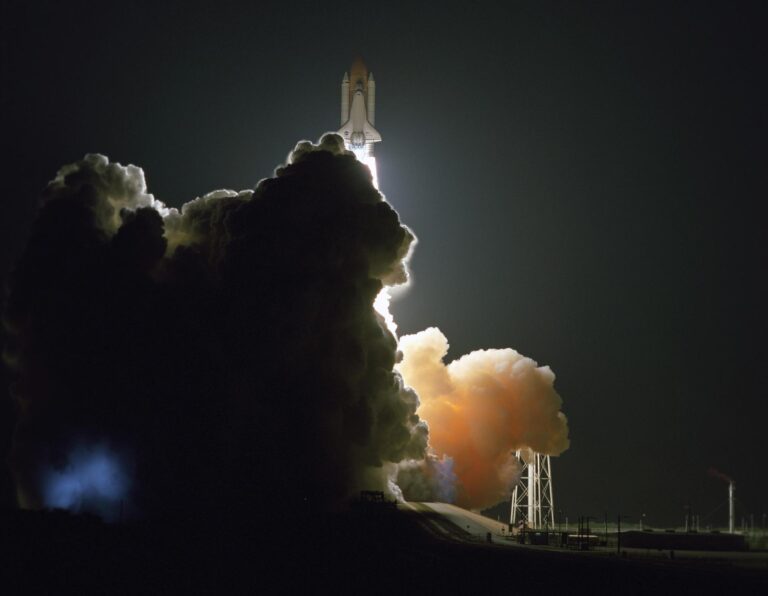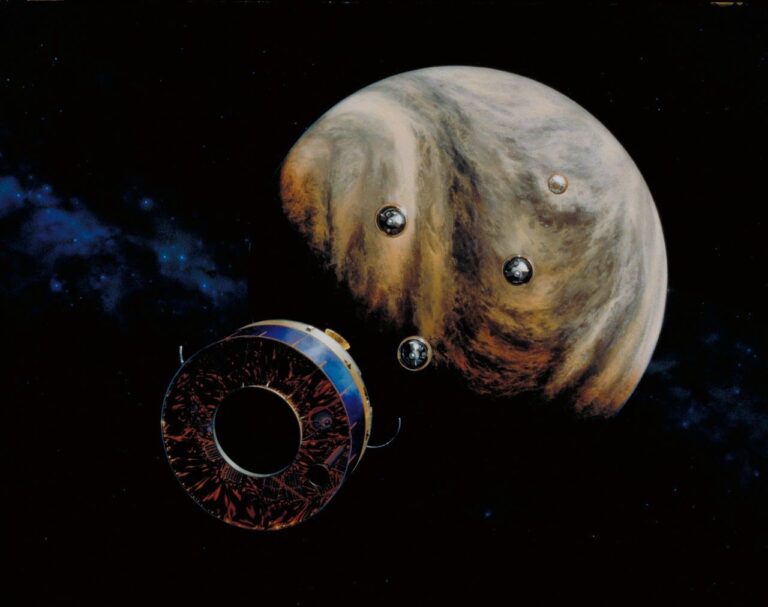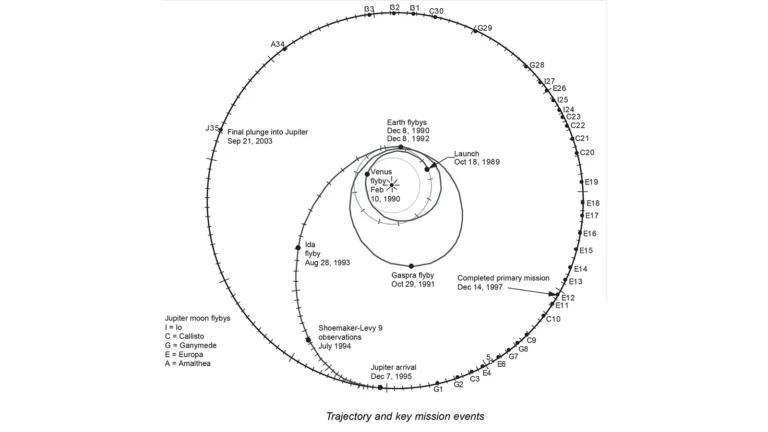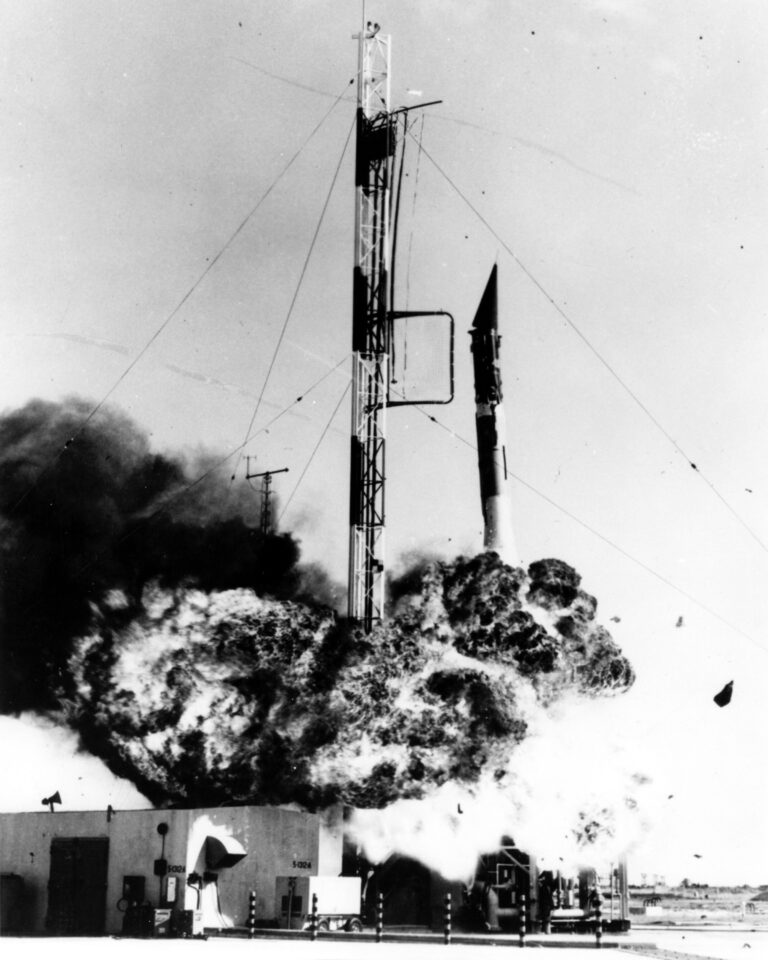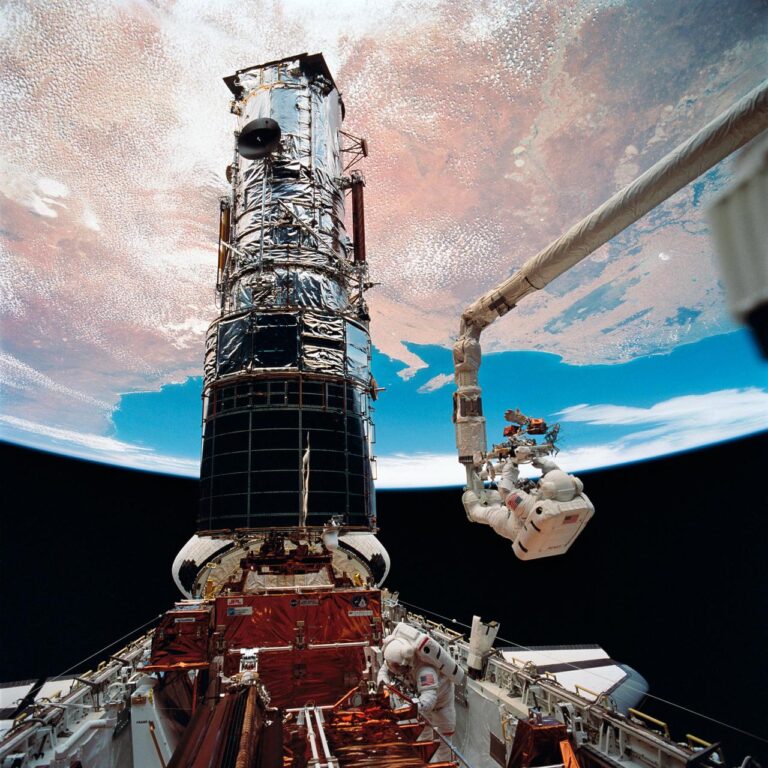Key Takeaways:
“What we see are two gamma-ray-emitting bubbles that extend 25,000 light-years north and south of the galactic center,” said Doug Finkbeiner from the Harvard-Smithsonian Center for Astrophysics in Cambridge, Massachusetts, who first recognized the feature. “We don’t fully understand their nature or origin.”
The structure spans more than half of the visible sky, from the constellation Virgo to the constellation Grus, and it may be millions of years old.
Finkbeiner, along with Meng Su and Tracy Slatyer, both from Harvard, discovered the bubbles by processing publicly available data from Fermi’s Large Area Telescope (LAT). The LAT is the most sensitive and highest-resolution gamma-ray detector ever launched. Gamma rays are the highest energy form of light.
Other astronomers studying gamma rays hadn’t detected the bubbles partly because of a fog of gamma rays that appears throughout the sky. The fog happens when particles moving near the speed of light interact with light and interstellar gas in the Milky Way. The LAT team constantly refines models to uncover new gamma-ray sources obscured by this diffuse emission. By using various estimates of the fog, Finkbeiner and his colleagues were able to isolate it from the LAT data and unveil the giant bubbles.
Scientists now are conducting more analyses to better understand how the never-before-seen structure was formed. The bubble emissions are much more energetic than the gamma-ray fog seen elsewhere in the Milky Way. The bubbles also appear to have well-defined edges. The structure’s shape and emissions suggest it was formed as a result of a large and relatively rapid energy release — the source of which remains a mystery.
One possibility includes a particle jet from the supermassive black hole at the galactic center. In many other galaxies, astronomers see fast particle jets powered by matter falling toward a central black hole. While there is no evidence the Milky Way’s black hole has such a jet today, it may have had one in the past. The bubbles also may have formed as a result of gas outflows from a burst of star formation, perhaps the one that produced many massive star clusters in the Milky Way’s center several million years ago.
“In other galaxies, we see that starbursts can drive enormous gas outflows,” said David Spergel from Princeton University in New Jersey. “Whatever the energy source behind these huge bubbles may be, it is connected to many deep questions in astrophysics.”
Hints of the bubbles appear in earlier spacecraft data. X-ray observations from the German-led Roentgen Satellite suggested subtle evidence for bubble edges close to the galactic center or in the same orientation as the Milky Way. NASA’s Wilkinson Microwave Anisotropy Probe detected an excess of radio signals at the position of the gamma-ray bubbles.
The Fermi LAT team also revealed the instrument’s best picture of the gamma-ray sky, the result of 2 years of data collection.
“Fermi scans the entire sky every 3 hours, and as the mission continues and our exposure deepens, we see the extreme universe in progressively greater detail,” said Julie McEnery from NASA’s Goddard Space Flight Center in Greenbelt, Maryland. NASA’s Fermi is an astrophysics and particle physics partnership, developed in collaboration with the U.S. Department of Energy, with important contributions from academic institutions and partners in France, Germany, Italy, Japan, Sweden, and the United States.
“Since its launch in June 2008, Fermi repeatedly has proven itself to be a frontier facility, giving us new insights ranging from the nature of space-time to the first observations of a gamma-ray nova,” said Jon Morse from NASA Headquarters, Washington, D.C. “These latest discoveries continue to demonstrate Fermi’s outstanding performance.”
“What we see are two gamma-ray-emitting bubbles that extend 25,000 light-years north and south of the galactic center,” said Doug Finkbeiner from the Harvard-Smithsonian Center for Astrophysics in Cambridge, Massachusetts, who first recognized the feature. “We don’t fully understand their nature or origin.”
The structure spans more than half of the visible sky, from the constellation Virgo to the constellation Grus, and it may be millions of years old.
Finkbeiner, along with Meng Su and Tracy Slatyer, both from Harvard, discovered the bubbles by processing publicly available data from Fermi’s Large Area Telescope (LAT). The LAT is the most sensitive and highest-resolution gamma-ray detector ever launched. Gamma rays are the highest energy form of light.
Other astronomers studying gamma rays hadn’t detected the bubbles partly because of a fog of gamma rays that appears throughout the sky. The fog happens when particles moving near the speed of light interact with light and interstellar gas in the Milky Way. The LAT team constantly refines models to uncover new gamma-ray sources obscured by this diffuse emission. By using various estimates of the fog, Finkbeiner and his colleagues were able to isolate it from the LAT data and unveil the giant bubbles.
Scientists now are conducting more analyses to better understand how the never-before-seen structure was formed. The bubble emissions are much more energetic than the gamma-ray fog seen elsewhere in the Milky Way. The bubbles also appear to have well-defined edges. The structure’s shape and emissions suggest it was formed as a result of a large and relatively rapid energy release — the source of which remains a mystery.
One possibility includes a particle jet from the supermassive black hole at the galactic center. In many other galaxies, astronomers see fast particle jets powered by matter falling toward a central black hole. While there is no evidence the Milky Way’s black hole has such a jet today, it may have had one in the past. The bubbles also may have formed as a result of gas outflows from a burst of star formation, perhaps the one that produced many massive star clusters in the Milky Way’s center several million years ago.
“In other galaxies, we see that starbursts can drive enormous gas outflows,” said David Spergel from Princeton University in New Jersey. “Whatever the energy source behind these huge bubbles may be, it is connected to many deep questions in astrophysics.”
Hints of the bubbles appear in earlier spacecraft data. X-ray observations from the German-led Roentgen Satellite suggested subtle evidence for bubble edges close to the galactic center or in the same orientation as the Milky Way. NASA’s Wilkinson Microwave Anisotropy Probe detected an excess of radio signals at the position of the gamma-ray bubbles.
The Fermi LAT team also revealed the instrument’s best picture of the gamma-ray sky, the result of 2 years of data collection.
“Fermi scans the entire sky every 3 hours, and as the mission continues and our exposure deepens, we see the extreme universe in progressively greater detail,” said Julie McEnery from NASA’s Goddard Space Flight Center in Greenbelt, Maryland. NASA’s Fermi is an astrophysics and particle physics partnership, developed in collaboration with the U.S. Department of Energy, with important contributions from academic institutions and partners in France, Germany, Italy, Japan, Sweden, and the United States.
“Since its launch in June 2008, Fermi repeatedly has proven itself to be a frontier facility, giving us new insights ranging from the nature of space-time to the first observations of a gamma-ray nova,” said Jon Morse from NASA Headquarters, Washington, D.C. “These latest discoveries continue to demonstrate Fermi’s outstanding performance.”


